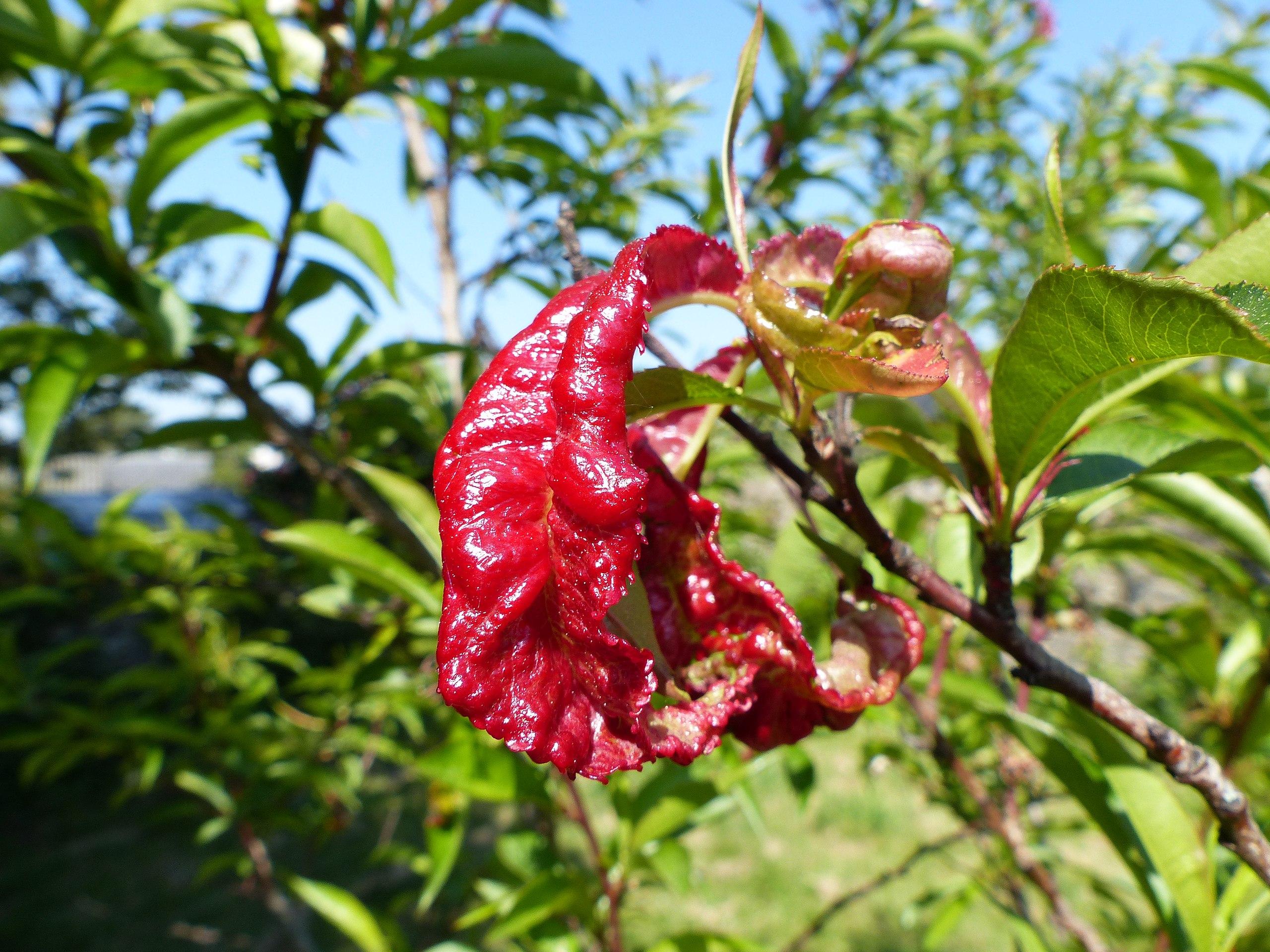
Peach leaf curl
Taphrina deformans
What is Peach leaf curl (Taphrina deformans)?
Peach leaf curl (Taphrina deformans) is a fungal disease affecting peaches, nectarines, and ornamental flowering peaches. It is distributed worldwide in regions where these trees are grown. The fungus thrives in cool, wet environments during spring, with temperatures between 50°F and 70°F (10°C to 20°C). Symptoms include reddish areas on developing leaves, which become thickened, puckered, and curled. Leaves may turn yellow, brown, or drop prematurely. The disease can also affect twigs and shoots, causing distortion, stunting, and dieback.
How does Peach leaf curl (Taphrina deformans) occur?
The disease cycle begins when the fungus overwinters in buds and bark crevices. In spring, as the trees start growing, spores are released and spread by rain, wind, or insects. The spores infect the developing leaves, causing characteristic symptoms. Cool, wet weather during leaf emergence provides optimal conditions for disease development. The fungus grows between leaf cells, causing them to swell, distort, and turn red or purple. The fungus then produces spores on the leaf surface, perpetuating the disease cycle.
Symptoms
1 - Plants Health
• Severe cases of peach leaf curl can cause a significant decrease in fruit production. Infected leaves may drop prematurely, leading to defoliation, weakening the tree, and impacting its overall health. • The disease can also stunt the growth of affected trees, resulting in reduced vigor and productivity, ultimately affecting their ability to produce healthy and abundant fruit.
2 - Impacts on Environment
Improper fungicide use for peach leaf curl control can have environmental consequences. Copper-based fungicides often used for this purpose can accumulate in the soil and harm soil organisms. Furthermore, the leaching of these fungicides into waterways can have detrimental effects on aquatic species.
Solutions
1 -
• Choose varieties that are resistant to the disease • Maintain overall tree health through proper watering, nutrition, and pruning practices, as healthy trees are better able to resist diseases. • Remove and destroy infected leaves and debris from the area to reduce the fungal population. • Prune trees to improve airflow and reduce humidity, which can help prevent disease development.
2 - Chemical Control
Commonly used fungicides for preventing and treating peach leaf curl include. • Copper-based fungicides: Examples include Kop R Spray Concentrate, Liqui-Cop, and Microcop. • Chlorothalonil: Brands such as Daconil, Bravo, and Fungonil are available. • Please ensure to follow the instructions on the fungicide labels and consider local regulations when using these products.
